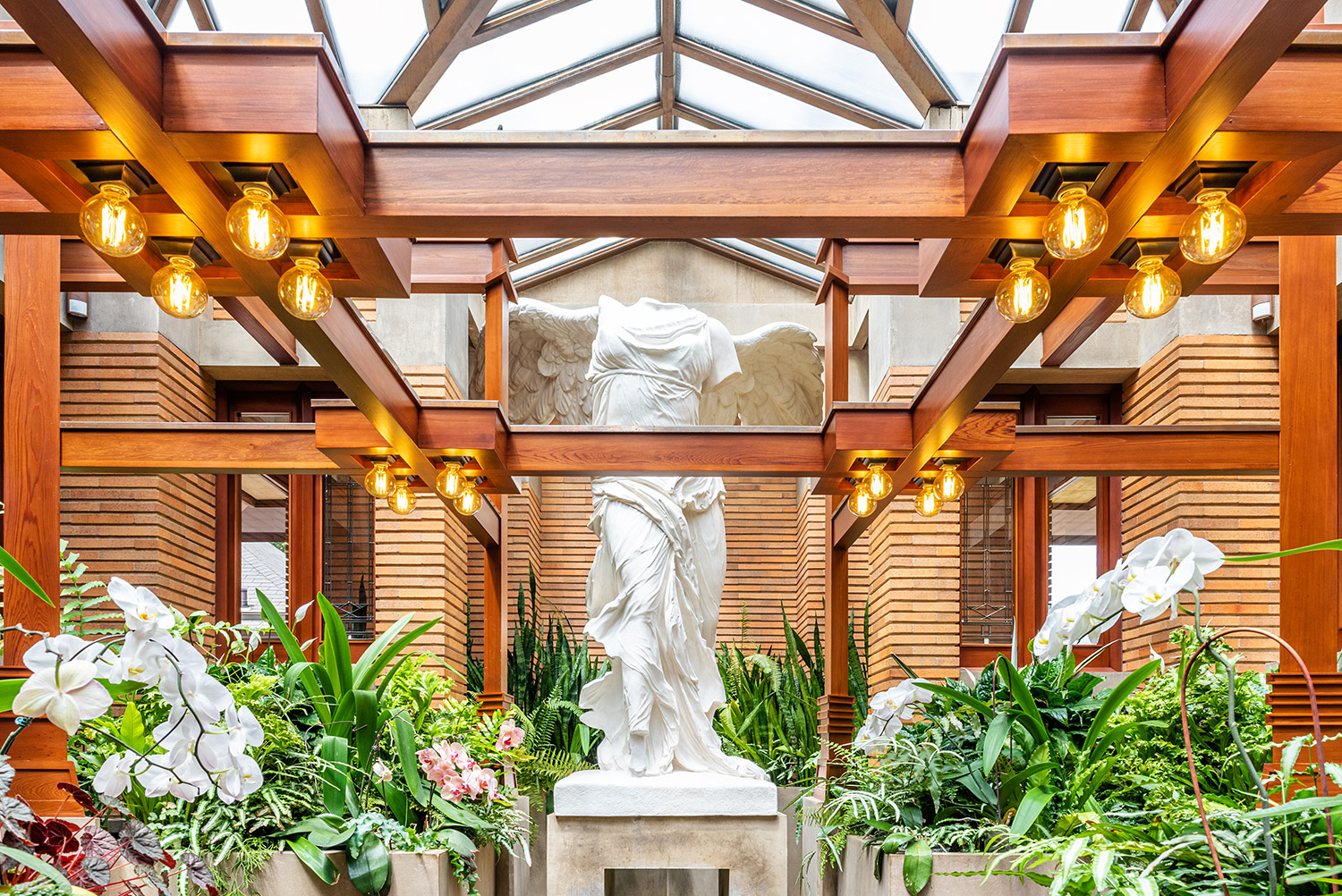In 2008, a few volunteers had a relatively simple yet remarkable idea. What if a jar was placed inside the Museum Store, and volunteers were invited to toss in any loose change as they passed by? A pickle jar was brought in, a sign was made, and in ten days the group had raised $60.
By September of 2011, more than $11,000 had been collected, and the first replica art glass window in the Conservatory was installed. It was a moment of deep pride for each member of this devoted volunteer team.
The quiet fundraising has continued. Recognizing the significance of the project, a talented and generous volunteer, Arlan Peters, created a beautiful, handmade replica of the conservatory years ago to replace the pickle jar. It sits safely behind the counter in the Museum Store today.
As the sun came through the skylights this past Saturday, the fourth art glass window – funded entirely by this “volunteer fund” – was installed inside the Conservatory.
We are truly humbled by this group’s generosity, and this fourth window installation – completed during this challenging time in history – is a symbol of inspiration and hope for all.
About the Conservatory Art Glass
The conservatory pattern is a geometric abstraction from nature, Wright’s infinite source of design inspiration. In this window, Wright takes the characteristic components of a flower — root, leaf, stem, and blossom — and renders them in art glass with geometric elegance.
The floral motif is an obvious allusion to the function of the building, an elaborated greenhouse, but also serves as a visual connection to the flowers observed in gardens beyond. In a practical sense, the conservatory art glass pattern incorporates a high proportion of clear plate glass, maximizing the penetration of sunlight into the building for the sake of the tropical plants within.
There were 57 pieces of art glass originally in the conservatory, all in the same pattern, with various adaptations to fit the size of different window and door openings. The pattern lends itself to such adaptations because the single flower motif is infinitely repeatable; it can stand alone, or in groups of interconnected floral elements, as in a formal garden.
The beautiful replicas are hand crafted by the talented team at Oakbrook Esser Studios in Wisconsin. Steve Oubre of Big Tree Furniture Works in East Aurora is the installer.









